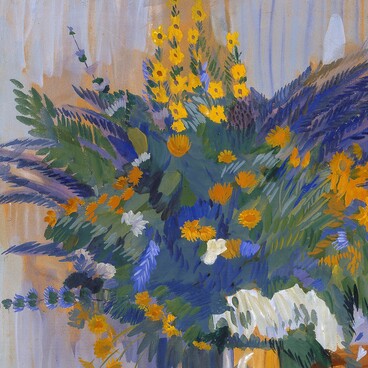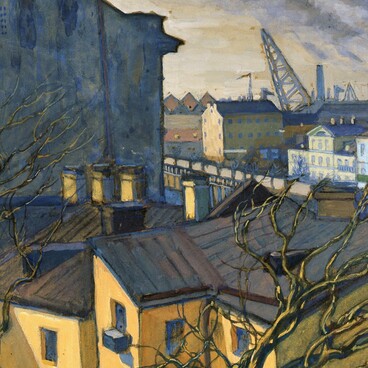In 1804, Karl Melli, former commissioner of Francis Gardner (founder of a prominent porcelain factory) established a porcelain factory in Gorbunovo, Moscow province. In 1811, it was acquired by a merchant Alexei Popov. At first, Popov followed the established by Gardner technological processes, however he developed his own unique artistic style.
The factory owned wooden buildings with several dozen machines. The first produced items were simple dinnerware sets with monochrome landscape painting. As the production expanded and the demand for porcelain increased, the masters began to create items in the Empire style. They had a characteristic design: high handles and necks, while wings and flower arrangements were the prevailing décor elements.
Popov’s factory produced not only the porcelain dinnerware, but also sculptures. At first, these were repetitions of figurines and sculptural compositions that were manufactured by other factories in the 18th century: ladies and gentlemen, children-gardeners, mythological and allegorical compositions. The factory also produced biscuit sculptures — items made of white porcelain, which were not covered with glaze.
One of the most famous items produced by the Popov factory were figurines from the series with ordinary people, which began to be produced in the 1830s. It included the heroes and heroines of popular novels of that time, street merchants, as well as sculptures in the form of famous buildings and even furniture.
After the death of Alexei Popov in 1850, the factory passed to his children — Dmitry and Tatiana. Then the production was inherited by Dmitry’s children — Vasily, Ivan, Alexey and Nikolai. In 1860, the heirs transferred the factory to a merchant Zhukov. Since that time, neo-Rococo features began to appear in the Popov porcelain: the masters created items which had a complex shape with a corrugated surface, which imitated flora and fauna. In 1872, the company was sold to Rudolf Schröder, after which it changed owners twice more and was closed in 1875.
The figurine ‘Shepherd Boy’, presented in the exhibition, was created at the Popov factory in the middle of the 19th century. The figurine depicts a young man with a svirel in his hands. A dog sits at his feet, and a walking stick stands next to him. The masters covered the statuette with glaze and painted it with painstaking detail. They paid special attention to the drawing of clothes. The natural and lively poses of the characters were the main characteristic features of the Popov’s porcelain.
The factory owned wooden buildings with several dozen machines. The first produced items were simple dinnerware sets with monochrome landscape painting. As the production expanded and the demand for porcelain increased, the masters began to create items in the Empire style. They had a characteristic design: high handles and necks, while wings and flower arrangements were the prevailing décor elements.
Popov’s factory produced not only the porcelain dinnerware, but also sculptures. At first, these were repetitions of figurines and sculptural compositions that were manufactured by other factories in the 18th century: ladies and gentlemen, children-gardeners, mythological and allegorical compositions. The factory also produced biscuit sculptures — items made of white porcelain, which were not covered with glaze.
One of the most famous items produced by the Popov factory were figurines from the series with ordinary people, which began to be produced in the 1830s. It included the heroes and heroines of popular novels of that time, street merchants, as well as sculptures in the form of famous buildings and even furniture.
After the death of Alexei Popov in 1850, the factory passed to his children — Dmitry and Tatiana. Then the production was inherited by Dmitry’s children — Vasily, Ivan, Alexey and Nikolai. In 1860, the heirs transferred the factory to a merchant Zhukov. Since that time, neo-Rococo features began to appear in the Popov porcelain: the masters created items which had a complex shape with a corrugated surface, which imitated flora and fauna. In 1872, the company was sold to Rudolf Schröder, after which it changed owners twice more and was closed in 1875.
The figurine ‘Shepherd Boy’, presented in the exhibition, was created at the Popov factory in the middle of the 19th century. The figurine depicts a young man with a svirel in his hands. A dog sits at his feet, and a walking stick stands next to him. The masters covered the statuette with glaze and painted it with painstaking detail. They paid special attention to the drawing of clothes. The natural and lively poses of the characters were the main characteristic features of the Popov’s porcelain.



